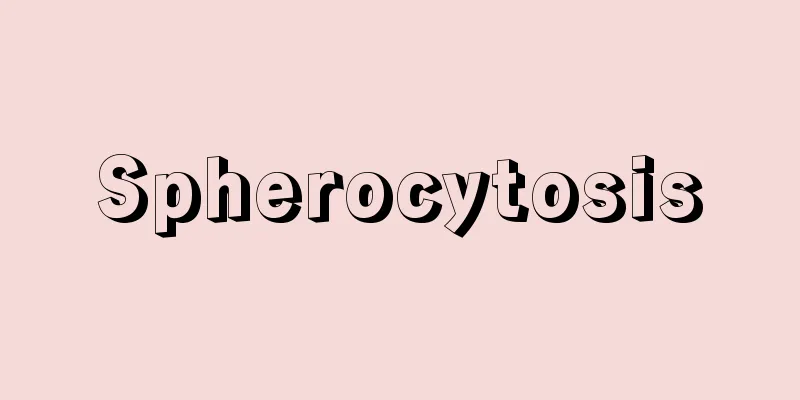Spherocytosis

|
We all know that the human body is made up of countless different types of cells, and the number of cells remains within a certain range. If the number increases or decreases, it will affect various balances in the human body, causing a series of unhealthy reactions in the body. An increase in spherocytosis can lead to anemia, splenomegaly, etc. The key point is that this is a hereditary disease, and corresponding treatment plans should be adopted to avoid spherocytosis. It is a type of hemolytic anemia characterized by a congenital defect in the red blood cell membrane. Its main manifestations are anemia, jaundice, and splenomegaly. The diagnosis is based on an increase in the number of spherocytes in the blood. The shape of normal red blood cells is disc-shaped with a depression in the middle. When the shape of red blood cells changes, it can cause anemia. "Hereditary spherocytosis" is named because the red blood cells are spherical and the disease is hereditary. The disease is inherited in a way that both men and women can get the disease, and there will be people with the disease in every generation, which is the so-called "autosomal dominant inheritance." Clinical manifestations The age of onset and severity of the disease vary greatly, and it usually occurs in infancy and childhood. If the disease occurs in a newborn or infant under 1 year old, the condition is generally more serious. There are two modes of inheritance of this disease, dominant and recessive. Complications such as hemolytic crisis, cholelithiasis, gout, and stubborn ankle ulcers or erythematous ulcers of the lower extremities may occur. Pathogenesis: It is mainly caused by the destruction of spherical red blood cells by the spleen, so surgical removal of the spleen is the fundamental method of treatment. However, the spleen is one of the important immune organs of the human body. Premature removal often leads to serious bacterial infection, so it is best to perform splenectomy after the age of 5. If the child's condition is serious and the spleen cannot be removed until after the age of 5, the age of surgery can be appropriately advanced, but in no case can the surgery be performed before the age of 1. Children under 5 years old who have had their spleen removed should be injected with long-acting penicillin once a month to prevent infection. The injection time depends on the age at the time of splenectomy, and is at least half a year. Postoperative care 1. Treat as normal abdominal surgery. 2. The drainage tube is usually removed 24 to 48 hours after surgery. 3. Check white blood cells and platelets daily after surgery. After surgery, when the platelet count exceeds (0.8~1)×1012/L, anticoagulant therapy should be performed. complication 1. Acute: (1) Severe hereditary spherocytosis causes severe anemia; (2) B19 virus infection causes erythrocytopenia; (3) Acute hemolysis (viral infection) 2. Long term: (1) Gallstones; (2) Folic acid deficiency |
<<: What is the cause of knee joint soreness
>>: What's wrong with my sore cheeks?
Recommend
Cognitive biases in patients with depression
Nowadays, people's pace of life is getting fa...
Early symptoms of nasopharyngeal carcinoma brain metastasis
What are the early symptoms of nasopharyngeal car...
What are the symptoms of brain development delay?
Symptoms of delayed brain development can also ma...
What should I do if my shoes rub my little toes? Learn these little tricks
Usually, newly bought shoes are uncomfortable to ...
What is the difference between blood sugar and urine sugar
There is actually a difference between blood suga...
What are the methods for treating advanced lung cancer? Advanced lung cancer should be treated with these methods
The incidence of lung cancer has been on a contin...
What are the symptoms of bronchial lung cancer
You may have heard of bronchial lung cancer, but ...
The inside of the nails are black
Blackening of the inside of the nails is most lik...
Why do you need to have a full body check when using targeted liver cancer drugs? Three reasons for a full body check when using targeted liver cancer drugs
The purpose of using targeted liver cancer drugs ...
How long can you live with breast cancer metastasis
There are many treatments for breast cancer. Surg...
Is it okay to wash your face with sulfur soap? The efficacy of sulfur soap
I believe everyone has heard of washing your face...
What kind of disease is endometrial cancer?
1. Endometrial cancer is a malignant tumor origin...
How to wash oil stains off clothes?
If people are not careful while eating, they will...
Which is better for disinfection, white vinegar or aged vinegar
Vinegar is a condiment in life. Because it contai...
What is the difference between rhinitis and nasopharyngeal carcinoma
Patients with nasopharyngeal cancer often have th...









